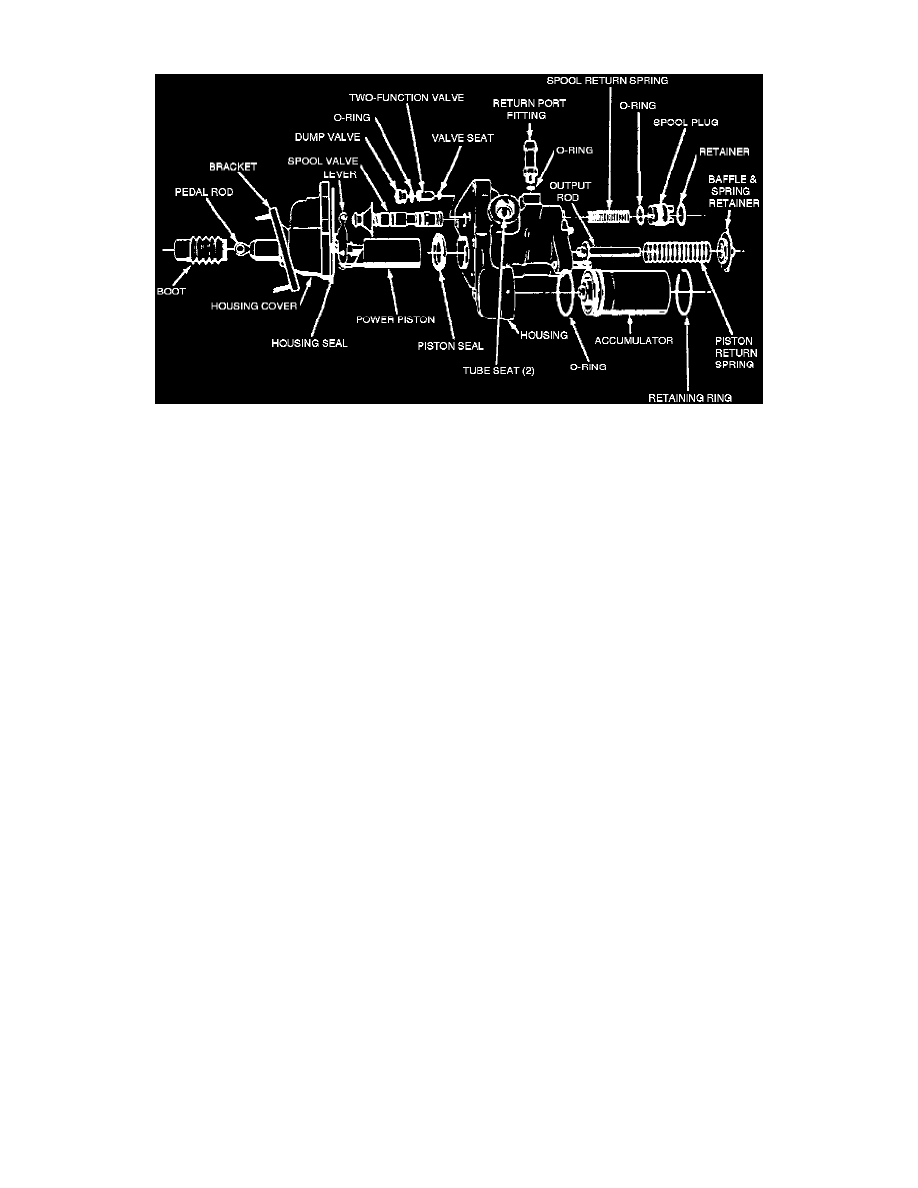Tahoe 4WD V8-393 6.5L DSL Turbo VIN S (1995)

Hydraulic Brake Booster: Description and Operation
Fig. 1 Cross-sectional View Of Bendix Hydro-Boost Unit.
In order to properly service power brake systems, a thorough understanding of the power assist system is necessary. These systems provide a
mechanical assist, acting to increase the force applied to the master cylinder piston by the driver while decreasing the effort necessary to obtain
acceptable stopping performance.
Hydraulic assist units incorporate a basic open center spool valve, hydraulic cylinder and an accumulator assembly in a common housing. When
the brake pedal is depressed, the hydraulic piston moves forward closing off fluid relief passages, the spool valve applies fluid pressure to the rear
of the piston, and pressure applied to the piston is transmitted to the brake master cylinder through a pushrod. When the brake pedal is released,
fluid pressure behind the piston is exhausted through the open center of the spool valve to a return line and the pump reservoir, and the spool valve
diverts fluid pressure away from the hydraulic piston. The accumulator stores sufficient fluid under pressure to provide two or three power assisted
stops in the event that pressure from the pump is interrupted. The design of the hydraulic cylinder allows the brakes to be applied without power
assist, however, greater pedal effort is required to apply the brakes manually.
The Hydro-Boost system, Fig. 1, provides an additional cylinder in the brake system. This cylinder contains no brake fluid. The Hydro-Boost
cylinder is hydraulically operated, by pressurized fluid from the power steering pump, providing power assist to operate a dual master cylinder
brake system.
The booster is composed of two sections; the linkage section and the power section.
The booster is designed so that if a total absence of power assist occurs, the brakes can be applied manually, but somewhat greater pressure on the
brake pedal is required.
